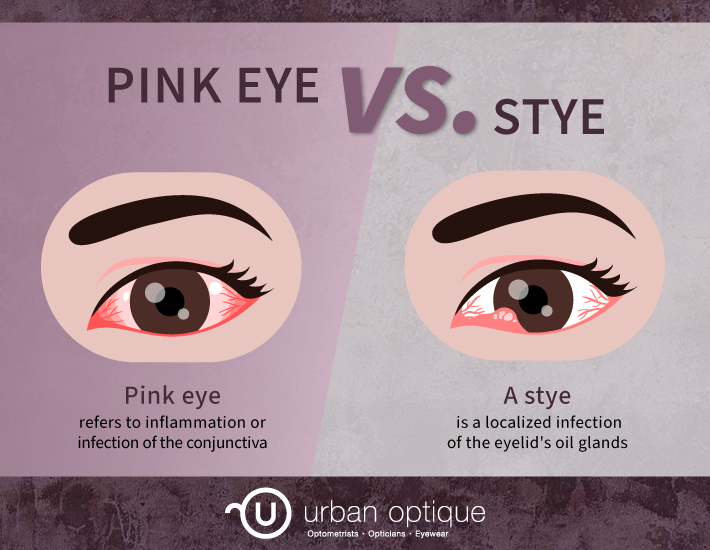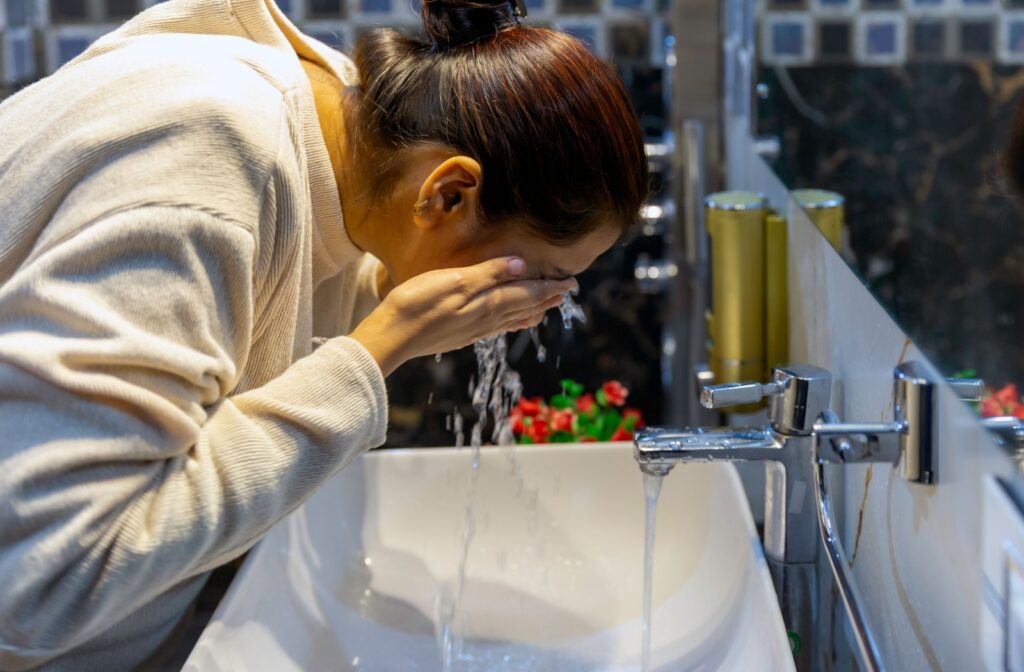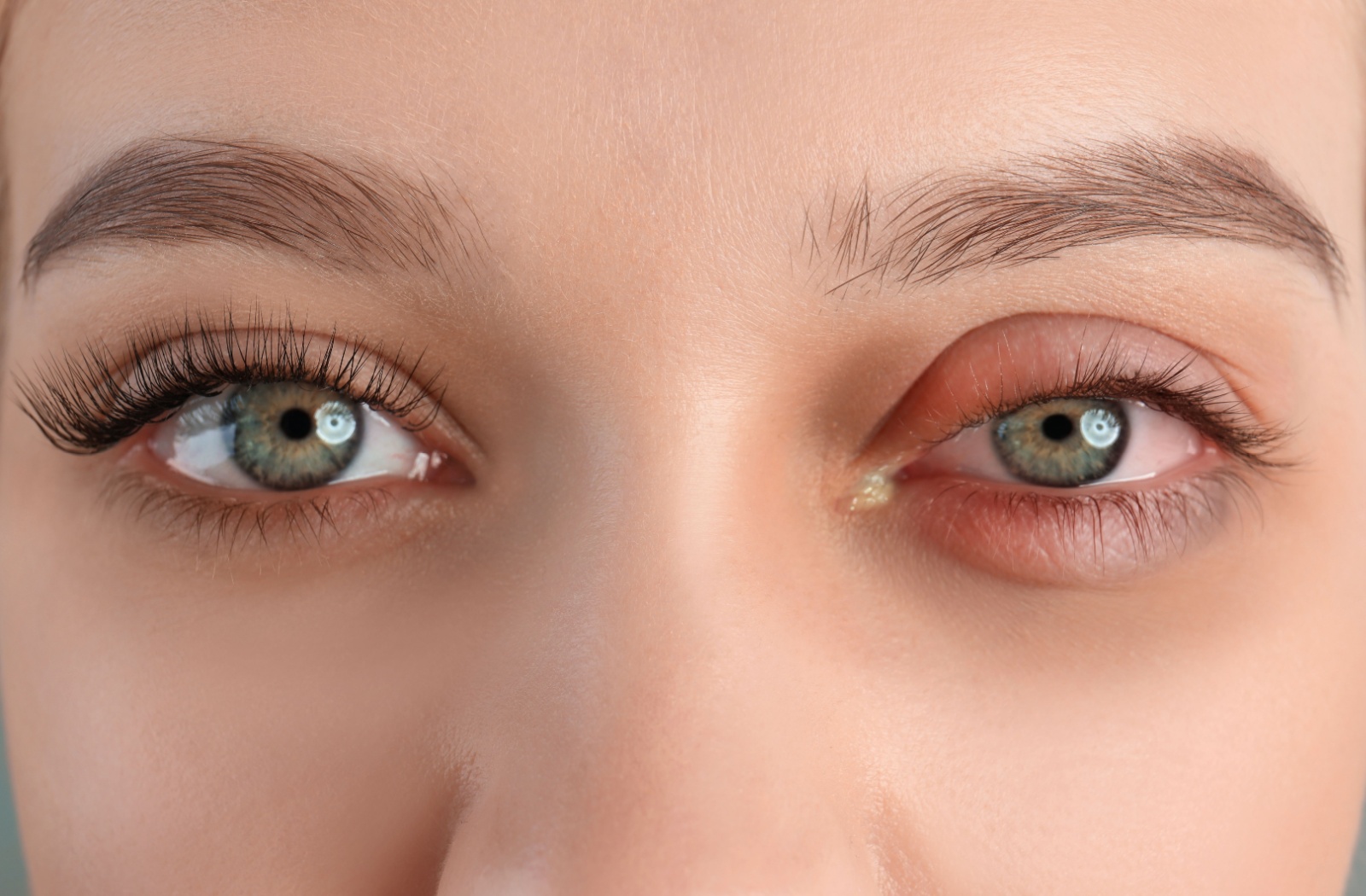Ever woken up with an itchy, swollen eye, wondering what’s causing the discomfort? You’re not alone. Many people are puzzled by the differences between pink eye and a stye. These common eye infections are similar in appearance but require different treatments, often with the guidance of an eye care professional. While pink eye refers to inflammation or infection of the conjunctiva, a stye is a localized infection of the eyelid’s oil glands.
What Exactly Is Pink Eye?
Pink eye—also known as conjunctivitis—refers to inflammation or infection of the conjunctiva, the thin, transparent layer of tissue that covers the white part of the eye and the inside of the eyelids. It can cause redness, itching, and tearing, which is quite common among children and adults.
Several causes of pink eye exist, including viral and bacterial infections, allergies, and irritants like smoke or chlorine in swimming pools. Viral conjunctivitis is usually associated with common cold symptoms, while bacterial conjunctivitis may produce a thick, yellow-green discharge. Allergic conjunctivitis often comes with sneezing and other allergy symptoms.
What Exactly Is a Stye?
Unlike pink eye, a stye is a localized infection of the eyelid’s oil glands, usually caused by bacteria and appearing as a red, painful lump near the edge of the eyelid. The lump might resemble a small pimple or boil and can cause swelling, tenderness, and irritation.
Styes are commonly associated with poor eyelid hygiene, stress, or hormonal changes. While they can occur at any age, children and teenagers might be more prone due to frequently rubbing their eyes.

How to Tell the Difference
Pink eye affects the conjunctiva, leading to widespread redness and sometimes affecting both eyes simultaneously. In contrast, a stye is localized to the eyelid, presenting as a distinct, tender lump. While pink eye often comes with a watery discharge, a stye may produce minimal discharge, if any.
It’s also worth noting that pink eye can be contagious, particularly in viral and bacterial forms. Styes, however, are generally not contagious and are more linked to individual factors such as hygiene practices.
Do Pink Eye Drops Work on Styes?
It’s essential to know that pink eye drops, particularly antibiotics, are designed to combat bacterial conjunctivitis. They are not effective against viral conjunctivitis or styes.
Since a stye is a localized eyelid infection, antibiotic ointments might be prescribed if the stye is severe or persists. However, simple at-home remedies like warm compresses and eyelid cleaning suffice for most styes.
If you’re unsure which treatment to use, consult an eye care specialist. They can diagnose your condition accurately and recommend the right course of action.
Will Pink Eye Go Away on Its Own?
The duration of pink eye depends on its cause. Viral conjunctivitis often clears up on its own within 1–2 weeks. Bacterial conjunctivitis might take a similar timeframe, though it can resolve quicker with antibiotic treatment. Allergic conjunctivitis tends to persist as long as the allergen is present.
While waiting for pink eye to disappear, there are steps you can take to ease discomfort:
- Cold compresses
- Artificial tears
- Over-the-counter antihistamines (for allergic conjunctivitis)
Good hygiene is crucial to prevent the spread of pink eye, especially to other family members. Washing hands frequently and avoiding sharing towels or makeup can reduce transmission risk.
Is Pink Eye Contagious? Are Styes?
Yes, pink eye can be highly contagious, particularly viral and bacterial pink eye. It spreads through direct contact with eye secretions or contaminated surfaces. Given the ease of transmission, outbreaks often occur in schools and daycare centers.
To prevent spreading pink eye, practice good hygiene by:
- Washing hands regularly
- Avoiding touching your face
- Staying home until symptoms improve
Unlike pink eye, a stye is generally not contagious. It’s an infection of the eyelid’s oil glands, usually caused by bacteria already present on the skin. However, as with pink eye, practicing good hygiene is still essential to prevent spreading bacteria to other parts of the eye or causing additional infections.
Even though styes aren’t spread from person to person, sharing certain items, such as makeup or towels, can increase the risk of developing a stye. Encouraging children to wash their hands regularly and teaching them not to rub their eyes can also help prevent styes.
Treatment Options
Pink Eye
Treating pink eye involves addressing the underlying cause. Symptomatic relief is the primary approach for viral conjunctivitis, as the infection must run its course. Cold compresses and artificial tears can alleviate symptoms while avoiding irritants can aid recovery.
Bacterial conjunctivitis might require antibiotic eye drops or ointments, which should be used as prescribed by a healthcare professional. Even if symptoms improve, following the full course of antibiotics helps with the complete eradication of the infection.

Stye
Dealing with a stye can be uncomfortable, but several effective home remedies can help ease symptoms and promote healing:
- Apply warm compresses to the affected eye for 10–15 minutes several times a day. The warmth encourages drainage and reduces swelling.
- Maintaining clean eyelids is important. Clean the eyelid area with a diluted baby shampoo or a mild, tear-free cleanser. This helps remove debris and bacteria that might contribute to the stye.
- If you wear contact lenses or makeup, it’s advisable to discontinue their use until the stye heals. Contacts can introduce bacteria to the eye, while makeup might irritate the sensitive area.
Visit Urban Optique
Regular eye check-ups and proper hygiene contribute significantly to preventing pink eye and styes. At Urban Optique, we believe your eyes are precious. Take proactive measures to make sure that you maintain good eye hygiene and preserve your vision for years to come. Contact our team today to book your next appointment.
















